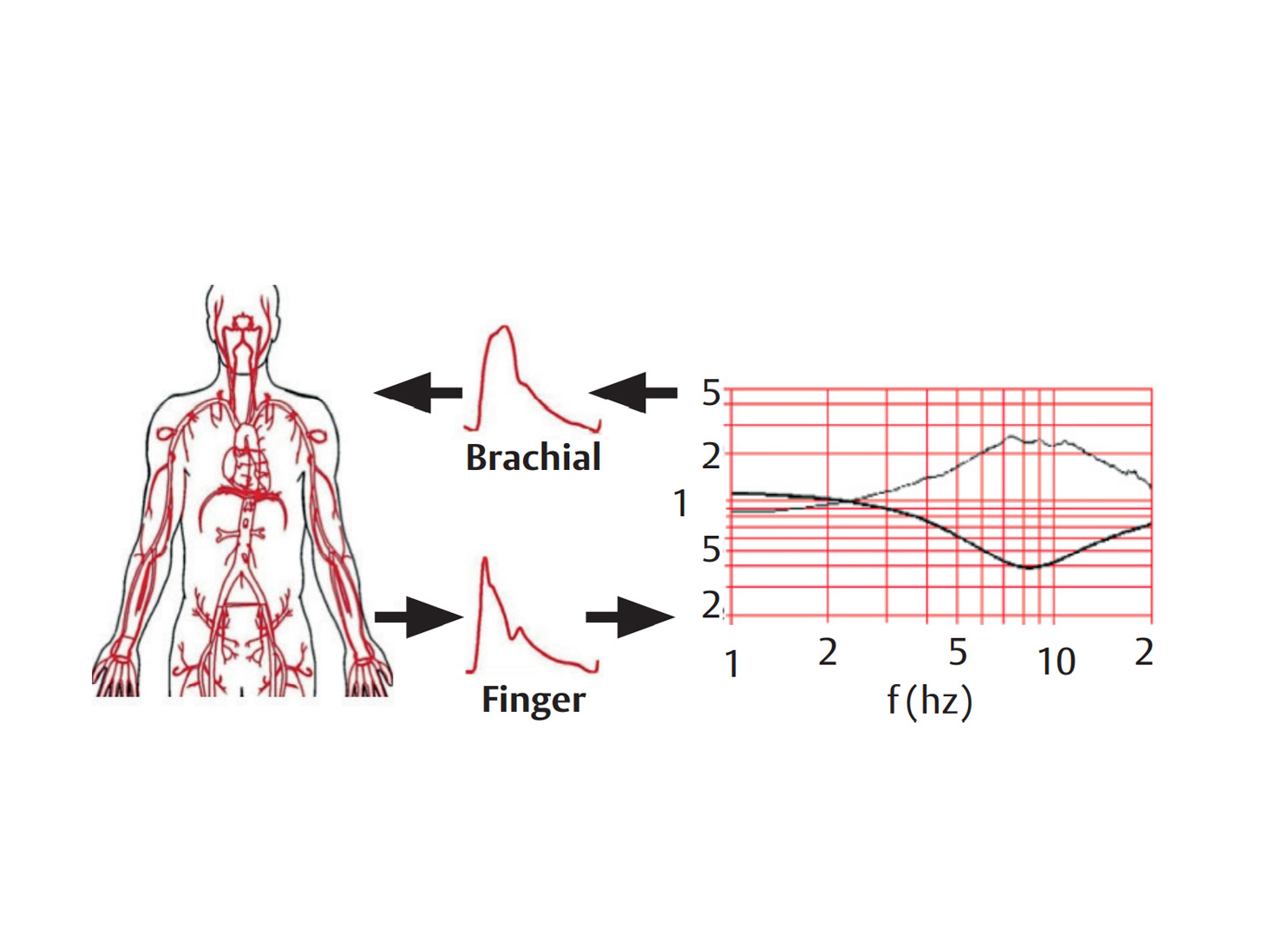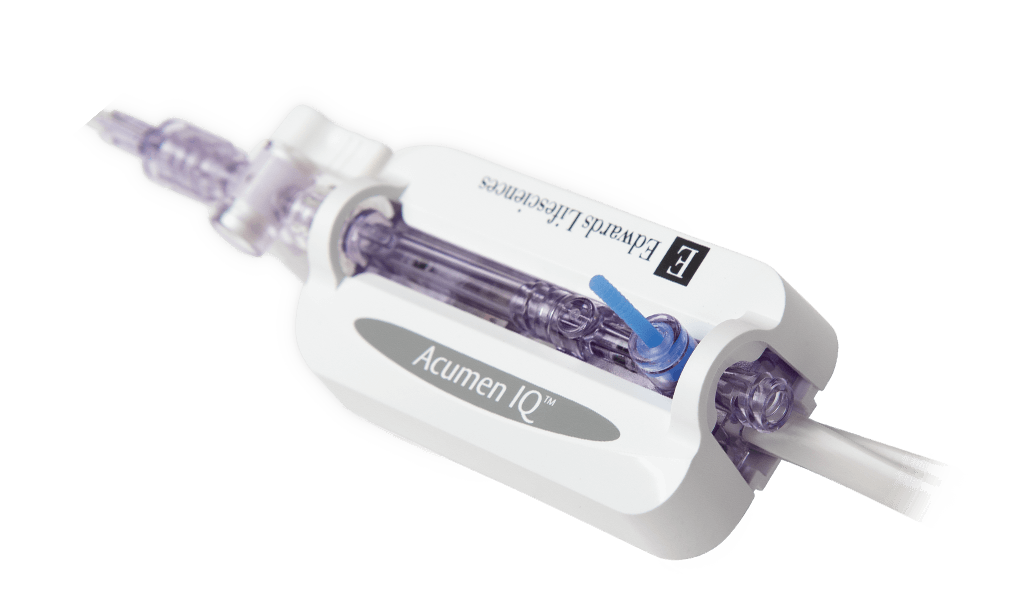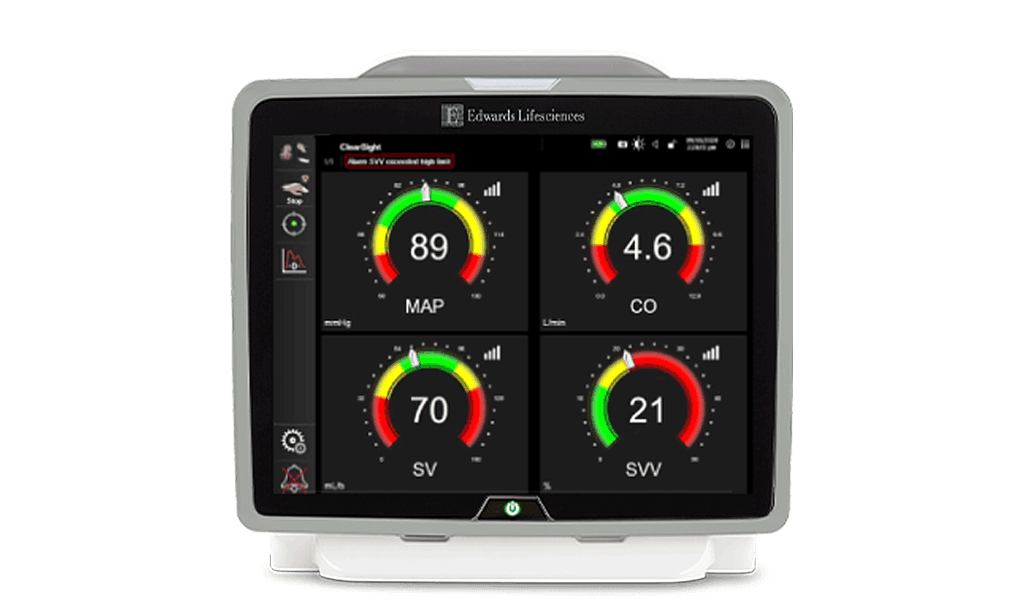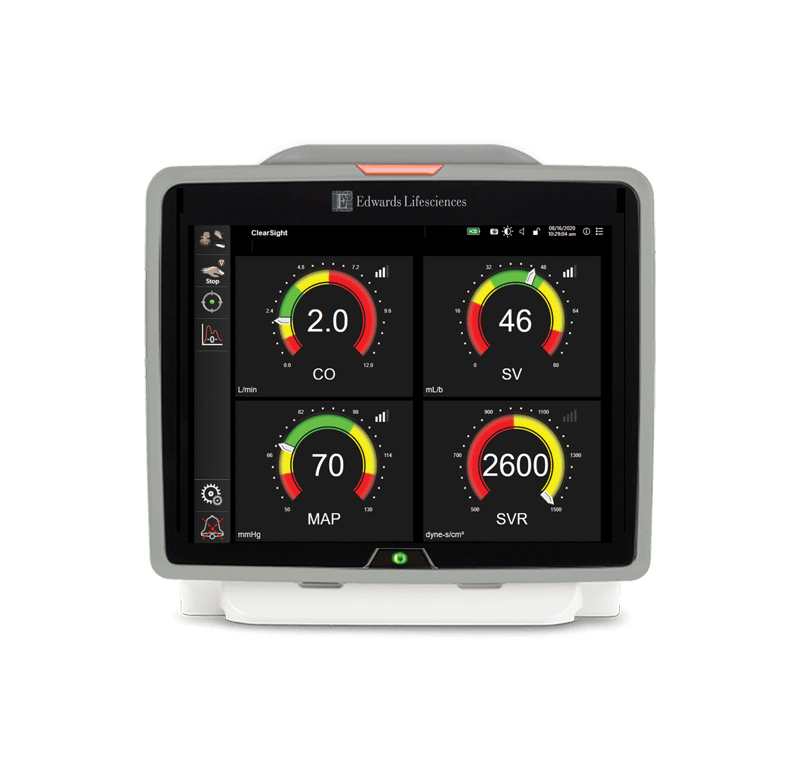ClearSight system

Edwards Lifesciences Critical Care product group is now part of BD (Becton, Dickinson and Company). Edwards is the manufacturer of the products.
To find the latest information, please visit this page on BD.com
A noninvasive solution that enables clinical decision support to help optimize patient perfusion
The ClearSight system provides continuous blood pressure and advanced hemodynamic parameters from a noninvasive finger cuff.
Continuous data offered by the ClearSight system enables you to proactively optimize perfusion through hemodynamic management.
Advanced hemodynamic monitoring, simplified
Proactive decision support for individualized patient care
Noninvasive hemodynamic monitoring offered by the ClearSight system provides information to enable you to make proactive clinical decisions across the continuum of care, including moderate- to high-risk surgery patients, and can be utilized to manage your patients’ changing clinical situations in the hospital environment.
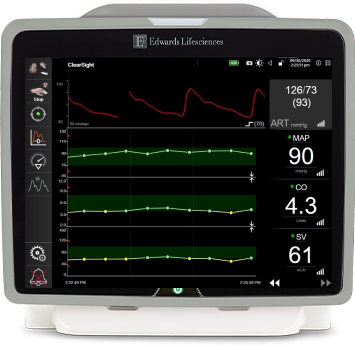
Continuous noninvasive monitoring
Continuous noninvasive blood pressure (BP) from a noninvasive finger cuff in addition to key advanced hemodynamic parameters:
- Cardiac Output (CO)
- Stroke Volume (SV)
- Stroke Volume Variation (SVV)
- Systemic Vascular Resistance (SVR)
- Mean Arterial Pressure (MAP)
Extend the benefits of hemodynamic monitoring
The ClearSight system gives you noninvasive access to automatically calculated, beat-to-beat hemodynamic information for a broader patient population, including patients in whom an arterial line would not be typically be placed.1
A versatile approach to continuous monitoring
The ClearSight system connects to your patient’s finger. Upon starting a measurement, the finger cuff can be used and re-applied for up to 72 hours on one patient. After 8 hours of continuous monitoring on a single finger, the finger cuff should be re-applied to another finger. To increase comfort, two ClearSight finger cuffs may be connected simultaneously to alternate the measurement between two fingers. This allows uninterrupted continuous monitoring up to 72 hours.
Now available on HemoSphere advanced monitoring platform
HemoSphere advanced monitoring platform provides a comprehensive view of hemodynamics and tissue oximetry, giving you confidence in knowing continuous oxygen saturation and perfusion for your patient. Full-range compatibility with noninvasive, minimally-invasive and catheter solutions allow you to pair a single monitor with the right device for your patient across different clinical settings and diverse patient profiles.
Model numbers
| Model | Description |
| ClearSight Finger Cuff Small (multi pack, 5) | CSCS |
| ClearSight Finger Cuff Medium (multi pack, 5) | CSCM |
| ClearSight Finger Cuff Large (multi pack, 5) | CSCL |
| HemoSphere ClearSight upgrade kit | HEMCSMUPG |
| HemoSphere smart recovery non-cardiac with ClearSight, Acumen IQ sensor, FloTrac, and tissue oximetry module | HEMAQSR2 |
| HemoSphere ClearSight module | HEMCSM10 |
1. Truijen, J et al. Noninvasive Continuous Hemodynamic Monitoring. Journal of Clinical Monitoring and Computing 2012;26(4):267–268.
Clinical application
The ClearSight system offers continuous clinical decision support to enable proactive clinical decisions for your moderate- to high-risk surgical patients and patients at risk for complications.

Hypotension management
Studies show associations between intraoperative hypotension and:
Increased risk of Acute Kidney Injury (AKI)
Cardiac & Non-Cardiac Surgery1
Myocardial Injury MINS
Leading cause of post-operative mortality within 30 days after surgery1
Cleveland Clinic researchers discovered that:2
- Continuous noninvasive monitoring reduced the amount of IOH by nearly half when compared to intermittent blood pressure monitoring.
- Early detection of hypotension by continuous hemodynamic monitoring allows for timely remedial actions, thereby reducing IOH.
Clarity through advanced hemodynamic parameters CO, SV, SVV, and SVR can help you determine if the cause of IOH is preload, afterload, or contractility.
- Salmasi, V., Maheshwari, K., Yang, G., Mascha, E.J., Singh, A., Sessler, D.I., & Kurz, A. (2017). Relationship between intraoperative hypotension, defined by either reduction from baseline or absolute thresholds, and acute kidney injury and myocardial injury. Anesthesiology, 126(1), 47-65
- Maheshwari, K et al. A Randomized Trial of Continuous Noninvasive Blood Pressure Monitoring During Noncardiac Surgery. Anesthesia & Analgesia, 2018 Aug; 127(2)424-431.
Technology overview
How does it work?
ClearSight system technology is based on two methods: the volume clamp method to continuously measure blood pressure (BP) and the Physiocal method for initial and frequent calibration.
For blood pressure and cardiac output validation studies, download the ClearSight technology overview here.
Edwards clinical education
Hemodynamic education empowering clinical advancement
With a long-term commitment to improving the quality of care for surgical and critical care patients through education, Edwards clinical education meets you no matter where you are in the learning process — with a continuum of resources and tools that continuously support you as you solve the clinical challenges facing you today, and in the future.
Important safety information
CAUTION: Federal (United States) law restricts this device to sale by or on the order of a physician.
See Instructions For Use (IFU) / Directions For Use (DFU) for full prescribing information, including indications, contraindications, warnings, precautions and adverse events.



